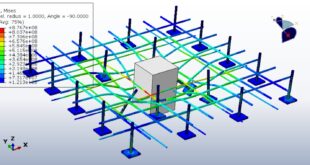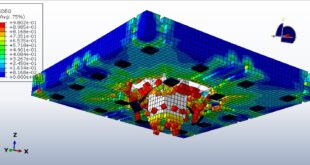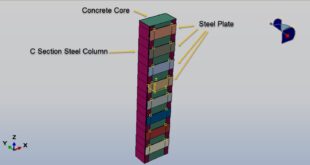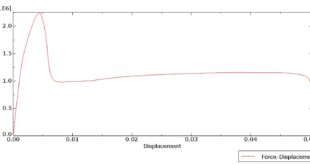Introduction to Finite Element Analysis of Hybrid Jute/Basalt Fiber Reinforced Polymer Confined UHPC Column under Axial Compression in Abaqus
Overview of the Study
Ultra-High Performance Concrete (UHPC) is known for its exceptional strength, durability, and ductility, making it suitable for high-performance structural applications. However, to further enhance its load-bearing capacity and ductility under axial compression, confinement using Fiber Reinforced Polymer (FRP) composites has been widely studied
Hybrid natural-synthetic FRP composites, such as jute/basalt FRP, offer a sustainable and cost-effective alternative to traditional synthetic FRPs (e.g., carbon or glass FRP). Jute fibers provide eco-friendliness and low-cost reinforcement, while basalt fibers contribute to high strength and stiffness. Combining these fibers in a polymer matrix can optimize the mechanical performance of confined UHPC columns
You can see the figures of the assembled parts below
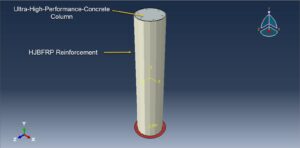
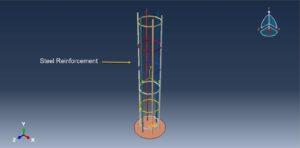
Finite Element Analysis (FEA) in Abaqus
Finite Element Analysis (FEA) using Abaqus/CAE provides a powerful numerical tool to simulate the axial compressive behavior of hybrid jute/basalt FRP-confined UHPC columns. This approach allows for
Material modeling of UHPC, jute/basalt FRP, and their interaction
Nonlinear analysis considering plasticity, damage, and large deformations
Validation of experimental results and parametric studies for optimization
Key Modeling Considerations
Material Properties
UHPC: Modeled using a concrete damage plasticity (CDP) model with high compressive strength and strain hardening/softening behavior
Jute/Basalt FRP: Defined as an orthotropic elastic material with different properties in fiber and transverse directions
FRP-UHPC Interface: Simulated using cohesive zone modeling (CZM) or surface-based contact to capture debonding effects
Significance of the Study
This FEA study provides insights into
The structural efficiency of hybrid jute/basalt FRP confinement
Sustainable alternatives to synthetic FRPs in UHPC columns
Optimization strategies for hybrid FRP designs in civil engineering applications
By leveraging Abaqus, this research contributes to the development of eco-friendly, high-performance confined concrete structures with improved axial load capacity and ductility
After the modeling and simulation in static and dynamic analysis, all results such as stress, strain, failure, tension, compression damage, force-displacement diagram, and… are available. You can see some figures of the results below
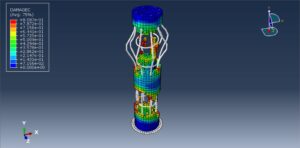
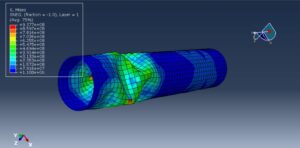
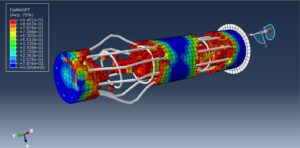
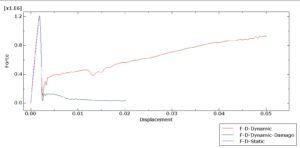
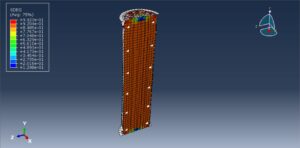
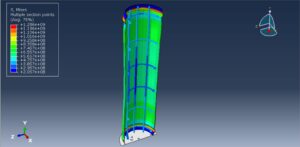
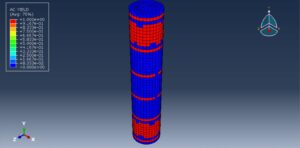
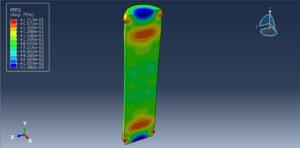
 Abaqus tutorials Abaqus tutorials
Abaqus tutorials Abaqus tutorials
